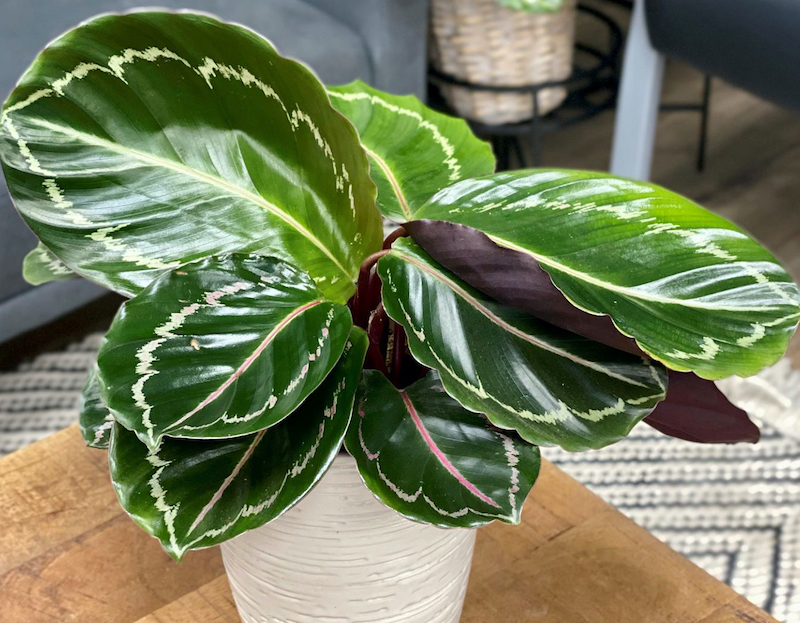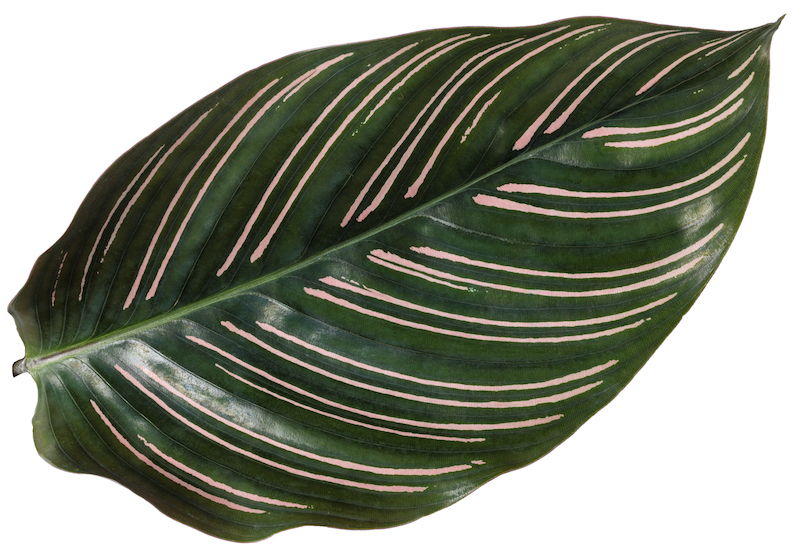Calathea Is Dying
Calatheas are tropical plants that know what they like. These plants naturally grow in rainforests where they live under the tree canopy and latch onto trees and other plants to receive ideal light and water. These plants need medium to bright indirect light and increased humidity to thrive. Water Calathea plants when the top layer of the soil is dry as these plants have high water needs. Routinely fertilize Calathea plants while they are actively growing to encourage new growth. Calathea plants that receive ideal care will thrive and bloom.

Calathea plants can be picky about their care. Plants that do not live in ideal conditions will let you know that they’re not happy. Limp or wilted foliage indicates the plant is dehydrated, while yellow leaf tips are a sign that the plant is overwatered. The leaves curl when the humidity is too low. Learn to spot the signs and routinely inspect your plant for indicators of stress. Once you identify an issue, you can work to resolve it.
Calathea Leaves Turning Yellow
Calathea leaves turn yellow at the tips when the plant is too wet. The yellow section will gradually move closer to the stem until the entire leaf dies. Foliage turning yellow is a sign of overwatering.
These plants prefer increased humidity, and Calathea plants grown in dry conditions will have browning along the edges of the foliage. The leaves will also curl when the humidity is low. Brown edges and curling leaves are signs the air is too dry, and the plant needs more moisture. Remove the dead leaf sections using clean shears and use a humidity tray to increase the moisture in the air around the plant.

Calathea Pests
Fungus gnats are a serious problem for Calathea houseplants. These plants have medium to high water needs and need increased humidity. Lots of moisture creates an ideal breeding ground for fungus gnats, which look like small fruit flies that swarm around the plant. Fungus gnats can damage the roots. Let the top inch of soil dry before watering and avoid overwatering to prevent a fungus gnat infestation. If fungus gnats appear, use yellow sticky traps to capture them, or apply a layer of sand or gravel to the top of the soil to disrupt the breeding cycle.
Calathea Diseases
Calathea are thirsty plants, and the most common issues relate to overwatering. Root rot, powdery mildew, and fungal leaf spots commonly occur when Calathea plants are overwatered. Plants suffering from root rot will have yellow and dying leaves, and the base of the stems will become mushy. Powdery mildew is a white mildew that grows on the surface of the foliage, while fungal leaf spots appear as discolorations on the leaves. Both powdery mildew and fungal leaf spots will spread and overtake the foliage.
Avoid these diseases by waiting to water until necessary. Wait until the top inch of soil is dry before watering Calathea. Yellowing foliage tips are the first sign of overwatered Calathea plants, so adjust your watering frequency at the first sign of a problem before things escalate.
Calathea Not blooming
Mature Calathea plants that receive proper care will often bloom. Small plants may not set flowers, so give the plant time and wait until it is bigger. Large Calathea plants may not bloom if they are underfed or rootbound. Fertilize Calathea plants during the spring and summer to encourage blooms, or upgrade to a larger pot if the plant is crowded.
Plants only bloom when they receive proper care, so ensure your Calathea is pest-free, properly watered, and receiving adequate light and humidity. Calathea plants bloom during the spring and summer, and it may take a while to get the plant back on track and ready to set flowers.
 |
Author Alison Cotsonas - Published 03-09-2023 |
